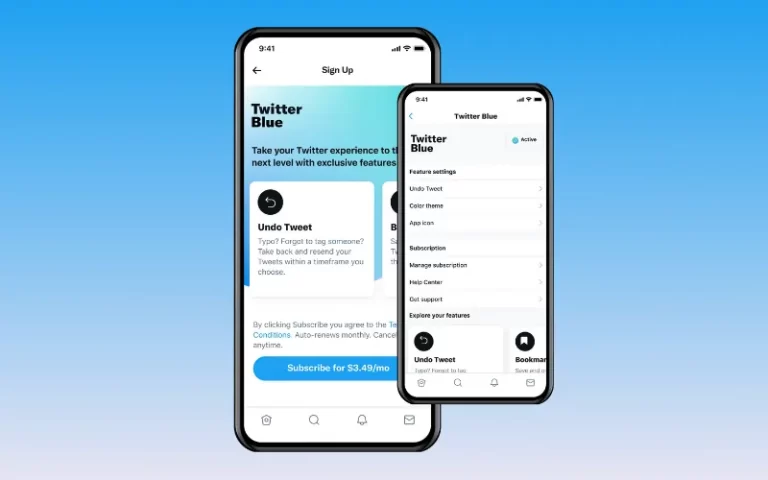Introduction
Twitter ads provide a powerful way for brands to reach targeted audiences and accomplish key business objectives. But to get the most value from Twitter ads, monitoring and understanding the robust analytics available is essential.
This comprehensive guide will explore the key metrics and reporting tools advertisers can access for Twitter campaigns. We’ll also discuss how to analyze this Twitter ads data to gain insights and continuously optimize for better performance.
Table of Contents
Overview of Twitter Ads Analytics
Twitter provides advertisers with an analytics dashboard containing a wealth of campaign data and metrics. By tapping into this data, advertisers can closely monitor the performance of Twitter ads.
Key elements of Twitter ads analytics include:
- Campaign reporting – Performance data for the campaign as a whole.
- Ad group reporting – Specific ad groups break down metrics within a campaign.
- Tweet reporting – Individual tweet performance.
- Engagement metrics – Clicks, likes, retweets and more.
- Billing metrics – Ad spend and bid info.
- Conversion tracking – Online and offline conversion data.
- Custom audience insights – How tailored audiences engage.
Twitter analytics give advertisers the visibility they need to judge campaign effectiveness and identify improvement opportunities.
Key Twitter Ads Metrics to Monitor

Advertisers should pay close attention to several key metrics that indicate the performance of Twitter ad campaigns:
Impressions
- How many times ads were shown? Means the reach or visibility of the campaign.
Engagements
- Total number of engagements, which includes likes, retweets, clicks, followers, etc. Shows resonance and interest.
Engagement Rate
- Engagements are divided by impressions. Critical for gauging engagement quality.
Link Clicks
- How many times have users clicked links in tweets? Valuable for driving site actions.
Retweets/Likes
- Viral reach is earned when users retweet or like ads. Shows organic amplification.
Website Clicks
- Clicks from Twitter to the advertiser’s site. It helps understand interest and intent.
Follows
- How many new followers ads were generated? Important for branded growth on Twitter.
Video Views
- Metrics for video ads. It is necessary for understanding video ad resonance.
Conversion Rate
- Conversions from clicks are divided by total clicks. Reveals Twitter ad ROI.
Analyzing how these key metrics trend throughout a campaign gives advertisers the insight to gauge impact and optimize.
Twitter Analytics Tools and Reports

Twitter provides advertisers with several ways to access analytics and reporting data:
Campaign Dashboard
The main dashboard shows high-level campaign metrics focused on engagement, conversions, and billing. Advertisers get an overview of performance.
Tweet Activity
This report shows stats for each promoted tweet, including impressions, clicks and engagement rate. This enables advertisers to identify their top-performing tweets.
Conversion Tracking
Advertisers can dig into conversion metrics for online and offline conversions to identify what’s driving the most valuable actions.
Audience Insights
See what interests, behaviours and traits are common among audiences engaging with ads to identify new similar audiences to target.
Ad Groups Report
Breaks down metrics by the different targeting ad groups set up within a campaign. It helps determine the optimal targeting.
Keyword Report
For campaigns targeting keywords, see impressions and engagement metrics for each keyword. Learn which drives the most clicks.
Brand Lift
Twitter provides surveys to measure how ads impact brand recalls, awareness, associations and other lifts.
Downloadable Reports
Advertisers can download detailed data tables to analyze performance in Excel or integrate them into other systems.
Advertisers can derive many beneficial insights by regularly accessing and analyzing these reports.
How to Analyze and Apply Twitter Ads Data

More than simply simply simply looking at campaign numbers is required. Advertisers must interpret the data, draw insights, and take action to capitalize on Twitter ads analytics fully. Here are some tips:
Set Benchmarks
Look at past campaign metrics to set benchmarks for goals and KPIs you want to hit with new campaigns.
Identify Top Performers
Find your best ads and target audiences based on engagement rates, clicks and conversions to expand upon what works.
Watch Trends
Monitor daily metrics to see how performance trends over time. Look for patterns, spikes and dips.
Calculate ROI
Factor campaign spending and revenue data together to determine the accurate return on ad investment.
Review Ad Copy
See if specific ad copy, hashtags and creatives drive more campaign conversions.
Refine Targeting
Build on audiences and interests that over-index for engagement to narrow your focus.
personalize Ads
Use insights on your engaged audiences to craft messaging that resonates more with each target group.
Improve CTAs
If certain calls-to-action have higher click rates, emphasize those across more campaigns.
Shift Ad Spend
Allocate more budget toward high-performing ads and audiences to maximize results.
Retarget Engaged Users
Create lookalike audiences modelled off your converted users for future campaigns.
Continuous analysis and learning allow advertisers to set smarter goals and squeeze more value from campaigns.
Getting More from Twitter Analytics
A few additional tips help advertisers analyze Twitter ads reporting more effectively:
- Export data – Download Twitter analytics to combine with other data sources for deeper analysis.
- A/B test ads – Try multiple ad variations with unique UTM codes to identify what resonates based on performance.
- Personalize dashboards – Customize Twitter analytics views to focus on the KPIs most important for your goals.
- Integrate with web analytics – Connect Twitter ads data feeds into tools like Google Analytics for cross-channel analysis.
- Check daily – Review daily metrics consistently to stay on top of trends and quickly catch any changes needed.
- Analyze audiences – Leverage audience reporting to build more refined targeting and creativity.
- Connect conversions – Use offline conversion tracking to tie ads to real revenue results.
- Benchmark competitors – Research competitor’s social and paid efforts as a comparison point.
The proper analysis process and tools enable advertisers to refine and improve Twitter ad performance continuously.
Case Study: Nonprofit Drives Donations with Twitter Analytics
One example that highlights the value of monitoring Twitter ads data comes from a nonprofit organization running fundraising campaigns.
By closely tracking website conversions driven by Twitter ads, they noticed higher donation rates from one particular custom audience. A closer look at that audience and their on-site behaviour revealed they often read blog content about the nonprofit’s mission in full before donating.
Armed with these insights, they tailored more ads with blog links, calls-to-action, and copy that was explicitly geared to this target audience. This resulted in a 57% increase in donations compared to their prior approach.
This example demonstrates how tapping into analytics can help nonprofits and other advertisers optimize Twitter ads for engagement and conversions.
Future Opportunities with Twitter Ad Analytics
As Twitter ads grow more advanced, so will the analytics capabilities available to advertisers:
- More granular audience segmentation data
- Custom dashboards with saved views
- Real-time alerting based on KPI thresholds
- Enhanced ability to analyze creative performance
- Tools to simulate and predict optimization impact
- Integration with marketing automation platforms
- Predictive analytics powered by machine learning
Twitter will likely continue enhancing its analytics tools to provide deeper data and key insights that continually empower advertisers to improve their ad campaigns’ performance.
Conclusion
To maximize the value of Twitter ads, advertisers need to monitor and analyze available campaign data closely. Taking the time to track KPIs, identify trends, uncover insights, and apply learnings to future campaigns enables brands to refine and optimize Twitter ads consistently.
The robust metrics and reporting Twitter provides create tremendous opportunities for improving visibility, driving engagement, and ultimately getting the most return from ad spending on the platform. Advertisers who actively track and apply Twitter ads analytics will increase their chances of orchestrating successful, high-impact campaigns.







